Raymond Frederick Redenbach (b 1922) & Jean Alice Wilton (b 1926)
Jean Alice Wilton (b 1926) was the was the fourth child of James Wilton (b 1885)and Margaret Hamilton Moffatt, and born 20 July 1922 in North Carlton.
Fred's Notes
"Born 20 July 1922 at a private hospital in North Carlton. Named Raymond Frederick but always called Fred because a cousin born sometime after me was also named Raymond, and to avoid confusion hence Fred. I had two brothers - Charles (James), 7 years older and Harry (Rowley) 5 years older. My mother (Frances) died in 1924 at childbirth.
"Grandfather Jacob and three brothers arrived from Germany in 1865. I understand they were aged in their teens to early twenties and unaccompanied. They prospected for gold from Western Australia to Omeo (Cassilis) and southern NSW. Jacob and brother Daniel, who had married sisters (the Boyd sisters), took up farming land in their own right adjacent the Tambo River at Upper Tambo in Victoria.
They selected this land in 1875, prior to marriage in 1878. Both marriages resulted in families of eight children, and each family comprised four boys and four girls. Jacob named his farm "Rheinhoff". He is recorded as having worked very hard for the community. The four brothers were talented musicians and formed the first band in Bairnsdale.
Grandfather Commins was a successful barrister and solicitor in Bairnsdale. He raced several racehorses in the area. He lived on a farming property, with grandmother, called Emerald Hill and they also owned an adjacent property called Mern. My memory of the area is limited, but I recall my father putting me on a train to Bairnsdale where I was picked up and driven to Emerald Hill in a horse drawn jinker. The train trip started in Melbourne as we now lived at Jolimont adjacent to the Melbourne Cricket Ground. The few memories of my trip to my grandparents were of the hundreds of rabbits along the road (Sandy Lane) from Bairnsdale to Emerald Hill. They covered the lane on approach, moved off until we passed by, and then moved back again. The roadside was covered in bracken fern so I presume there was a picking of grass on the road. Another memory of this visit was learning to ride the farm pony called Pasha and having to hold a racehorse by a halter whilst he grazed on the lawn. Being a lively horse he promptly stomped on my foot – I was in agony for many days. Not very exciting memories but as I was only six years old they are things still in my memory some 70+ years on.
As mentioned we lived at Jolimont, moving there from the Bairnsdale area when I was about four years old I think. My mother died the day before my second birthday as the result of childbirth complications. My Aunt Dorothy (Commins) was looking after me and my two brothers – Charles James seven years my senior and Henry Adolphus (Rowley) five years older. It was a great sacrifice by her. The Great Depression, which was worldwide, was beginning. They were extremely tough times for everyone – very little work and no welfare although I think there was a handout of food for the hungry. I, however, never went hungry. Later on the Government had a scheme called sustenance which provided a very small payment for pick and shovel work on roads etc. My father kept things on track for food and clothing as he had rented a two-storey place and sublet part to another family, and he also had some work as a night watchman (security guard).
I commenced schooling during this period at the Yarra Park State School adjacent to Punt Road, Richmond. From Jolimont we moved to Carlton as the house rent was cheaper. Income was obtainedthe same way – letting part of the two-storey house to others. This was in about 1930-31. I went to the Faraday Street State School which was opposite the house. We moved to Parkville (near the Zoo) 2-3 years on and I still attended the Faraday Street School.
During these years at Carlton and Parkville I would sneak off to the Carlton Football Ground on Saturday afternoon for "home" games. I never had a penny but there was a kind man who always let me crawl under the turnstile and in to the footy for free. After a short stay at Parkville we moved to Reservoir in about 1933. My father managed to buy a house there as they were very cheap. Reservoir at that time was looked upon as a remote area. My father earned a living running cows and sheep on the hundreds of acres of vacant land around us. My two brothers were now in jobs and the depression years were almost at an end. I went to the local school and then to Preston Tech in 1937 and early 1938.
Next shift was more permanent - to Reservoir about 1933. Bought a house and my father made a living by running a few cows and sheep on the thousands of unoccupied blocks of land. Went to Reservoir State School and then on to Preston Tech.
Played football in my youth for Reservoir and West Footscray including two or three premiership wins. Also did foot running for a few years".
Not being a scholar I began looking for employment during 1938. Work was becoming easier to obtain and I obtained a position at a Malvern Star bike factory in South Melbourne and owned by Bruce Small who, some years later, developed the Gold Coast canal estates from swampland. He also became mayor of the Gold Coast Council. I did not stay long at his bike factory as it was tough and repetitious work, and I left and secured work at Wittners Shoe Stores warehouse in Collins Street, Melbourne. It was reasonably satisfactory but after some time there on the advice of my brother I left and obtained work at Daniel Scott an engineering workshop at Port Melbourne next door to Port Melbourne Football Ground. I did a five-year apprenticeship as a fitter and turner, another job I did not like greatly – particularly the 15 shilling ($1.50) starting rate. The redeeming feature was that I could train with Port Melbourne Football Club in winter and in summer I trained at foot running (5 nights). Not much time for a social life but I enjoyed the training and fellowship. Of course soon after starting my apprenticeship the 1939-1945 War started. When my course finished in 1944 fitter tradesmen were urgently required at the railway workshops in Ipswich, Queensland. You had to have a permit to change positions in the war years but I had no trouble in transferring as the work entailed building and repairing locomotives for "war effort" classification work. The locos were used for troop and food transport etc, mainly to North Queensland, and of course the suburban train network only had steam engine locomotives.
Returned to Melbourne at the end of 1944 and worked at Braemar Engineering (Richmond), Gill Engineering (Preston), British Shoe Machinery (Fitzroy). Liked neither factory nor engineering work and managed to get a job as a carpenter near home (Reservoir) with a firm called Wells Brothers. (some connection with A V Jennings). Left and worked as a carpenter with Frank Watson (Watson and Yorke) Regent, then three years on a farm at Kawarren. On to Colac and built spec. homes.
I married Jean Alice Wilton in November 1945 and we lived at Reservoir in a house purchased for 300 Pounds ($600). It was a solid three-bedroom home and purchased with the proceeds left to me after the death of my grandfather Commins.
In 1947 I obtained work as a carpenter for a firm building hundreds of houses for the Housing Commission at Reservoir. There was an acute shortage of houses and the building trade was booming following the end of the 1939-1945 War, during which no houses were built. After a couple of years I worked with another builder, Frank Watson, who was a good friend of ours.
In 1952 we moved to a dairy farm at Kawarren, south of Colac. We sold in 1955 and moved to Colac where I again did building work until obtaining employment with the Lands Department at Colac in 1959, and then had positions at Apollo Bay, Avoca, Woomelang, and then the Clunes District where we lived at Creswick mainly until I retired in early 1980.
We moved to the Gold Coast, Queensland in July 1980 and lived at Tugun, Currumbin before moving to our present address at Twin Towns Resort, Tweed Heads".
These ten best ever Carlton players were selected by Fred in December 2004.
1. Jesaulenko 2. Howell 3. Nicholls 4. Doull 5. Williams 6. Kernahan 7. Henfry 8. Crane 9. Southby 10. CombenJean's Notes
"I was born on the 31st December 1926 to Margaret and James Wilton at our home in Reservoir. My mother’s maiden name was Moffat. I was the last child in our family; the eldest was Charles, 10 years older than me, sister Margaret and brother James. My mother had twins between Charles and Margaret - a boy William and a girl Helen - who each only lived for a few days. I was called Jean Alice after two of my mother’s sisters who lived in Scotland.
My parents migrated to Australia from Scotland five years earlier on an assisted passage of 10 Pounds. My mother was sick on the whole voyage so the crew on the ship looked after Charles while my father tended my mother and baby Margaret. I don’t remember a lot about my early life. My father was a carpenter by trade and mostly managed to find work, although times were tough and there was no money to spare. My mother (Margaret Hamilton Moffat) had a small shop at the front of our house at Thomastown for a while.
One of my earliest recollections was our house getting burnt down and the fire brigade coming - we had no electricity in those early times and my father had slipped on the polished floor whilst carrying a kerosene lamp, so the flames quickly spread and few things were saved. So we had very few photos etc of our early life. My father rebuilt the house while we rented elsewhere.
My father, who was a carpenter, shifted our family to Thomastown where I lived, except for a short time away when our house was destroyed by fire, until my marriage in 1945. Our father built a new one on the same site. He also added a shop front where my mother ran a grocery store.
We lived next door to the school where I did all my schooling as I never had secondary education. I left school at 14 after gaining a Merit Certificate. I helped my mother in the shop until I got a job in Melbourne in a small novelty workshop, where we painted designs on children's cups and plates, and also boxes (glove, handkerchief, jewellery boxes etc.). As it was wartime, and this work wasn't considered essential, we had to spend half of each day doing bookbinding which was most unpleasant work. My brother Charlie was in the Air Force, and he was a potter by trade. Margaret was a tailoress and Jimmy a motor mechanic.
I never played sport or had many hobbies but always loved reading. I was never encouraged to do much of this either as I had lost the sight of one eye when I had accidentally run a needle into it while sewing. This accident caused me to have several trips to hospital but my sight couldn't be restored.
Thomastown where we lived was only a small place. The local hall was our focal point. We held dances, community singing and the occasional play or exhibition there. Whenever there was to be a function there, we local girls used to spend Saturday afternoons making the sandwiches and decorating the place.
Our house was next to the school where I stayed until the 8th grade. My school days were reasonably happy, although I had lost the sight of one eye and often had to wear very dark glasses which the otherchildren teased me about, but I survived with little harm done. I was a very average scholar and no good at sport, so naturally I was the last one to be picked for the side on sport’s day.
Charlie got a job at Fowlers Pottery nearby, and went on to have his own pottery in later years. Margaret became a tailoress in a suit factory, and Jimmy became a motor mechanic. I worked in a small “arty” place called Jean King novelties in Melbourne. We painted wooden boxes to hold gloves, handkerchiefs, jewellery, children’s plates, beakers etc. I quite liked the work, and stayed there until I married Fred (Raymond Frederick Redenbach) in 1945, a month short of my 19th birthday.
During the war years, 1939-1945, our work was called an unessential industry so we had to do book binding for several hours each day to please the authorities. My brother Charlie spent time in the Air Force and my father also enlisted, but neither were sent out of the country. The war was a sad time for everyone as so many young people lost their lives. When anyone in the district joined up the locals put on farewell party in the local hall. When we heard of the loss of someone we knew, it affected the whole district.
I travelled to work by train and it was there I met Fred. We became engaged in March 1945 and were married on the 24th November 1945. The war was over by then and things were getting back to normal. We lived in Reservoir where Paula and John were born. Then we bought a farm at Kawarren where we had Glenn. We shifted into Colac later where we lived for quite some time."
We shifted to a house in Reservoir which Fred had bought earlier. It was there Paula spent her early years. Paula was born at the Kia Ora Maternity Hospital in Regent, and then spent the first 5 years in Reservoir before shifting to a farm in Kawarren in 1953.
Three years later we shifted to Colac where Paula attended the Colac East State School. Her childhood illnesses were very few, but her tonsils were removed at 3 years which was very traumatic as children were not kept in hospital then. Also Paula fell out of the car once. Fortunately we were travelling slowly and she only received gravel rash.
We had several nice trips away, leaving John with relatives. We had no hope of leaving Paula as she was a child who became most upset with other people in charge. Paula was a very obedient, studious schoolgirl who spent her secondary education between Colac High and the Consolidated School at Apollo Bay.”
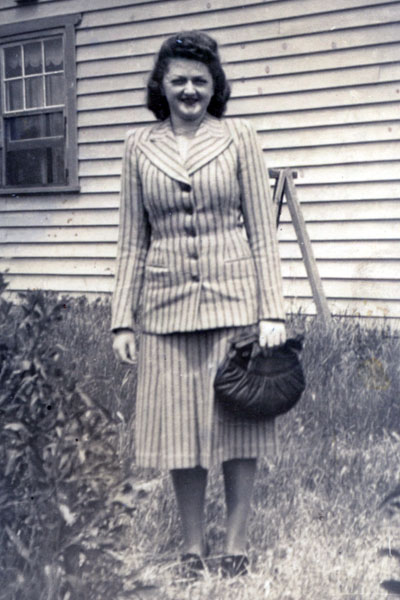
Jean Alice Wilton (b 1926)
About 1945
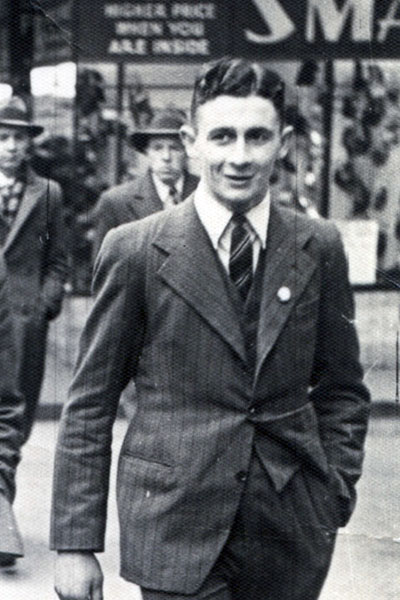
Raymond Frederick Redenbach (b 1922)
About 1947
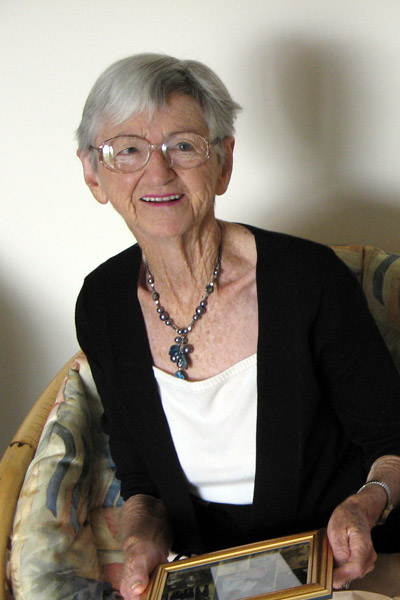
Jean Alice Wilton (b 1926)
80th Birthday
2006
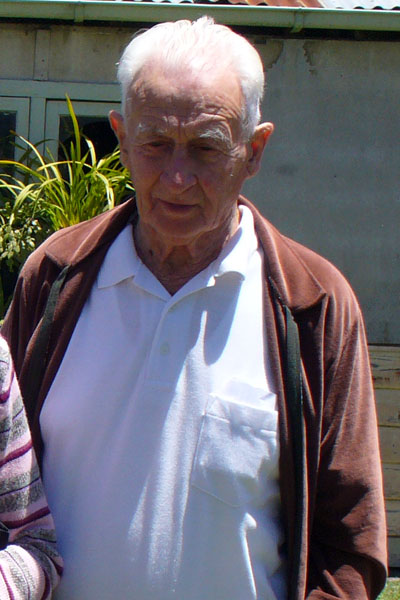
Raymond Frederick Redenbach (b 1922)
December 2005
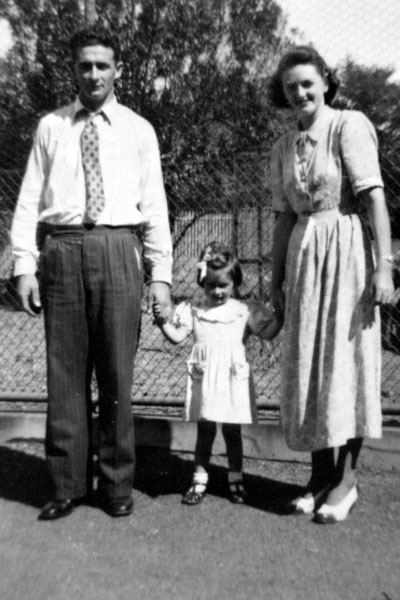
Raymond Frederick Redenbach (b 1922) & Jean Alice Wilton (b 1926) with Paula
1951
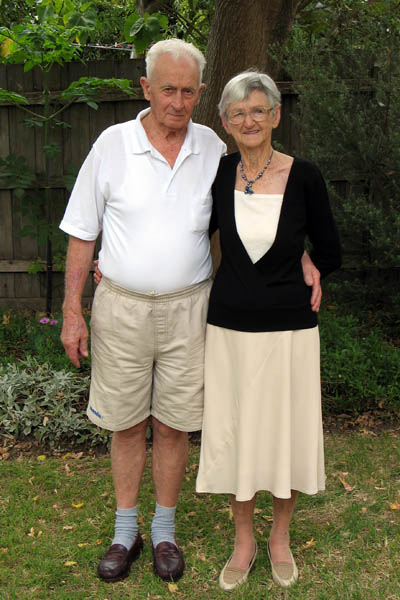
Raymond Frederick Redenbach (b 1922) & Jean Alice Wilton (b 1926)
December 2006